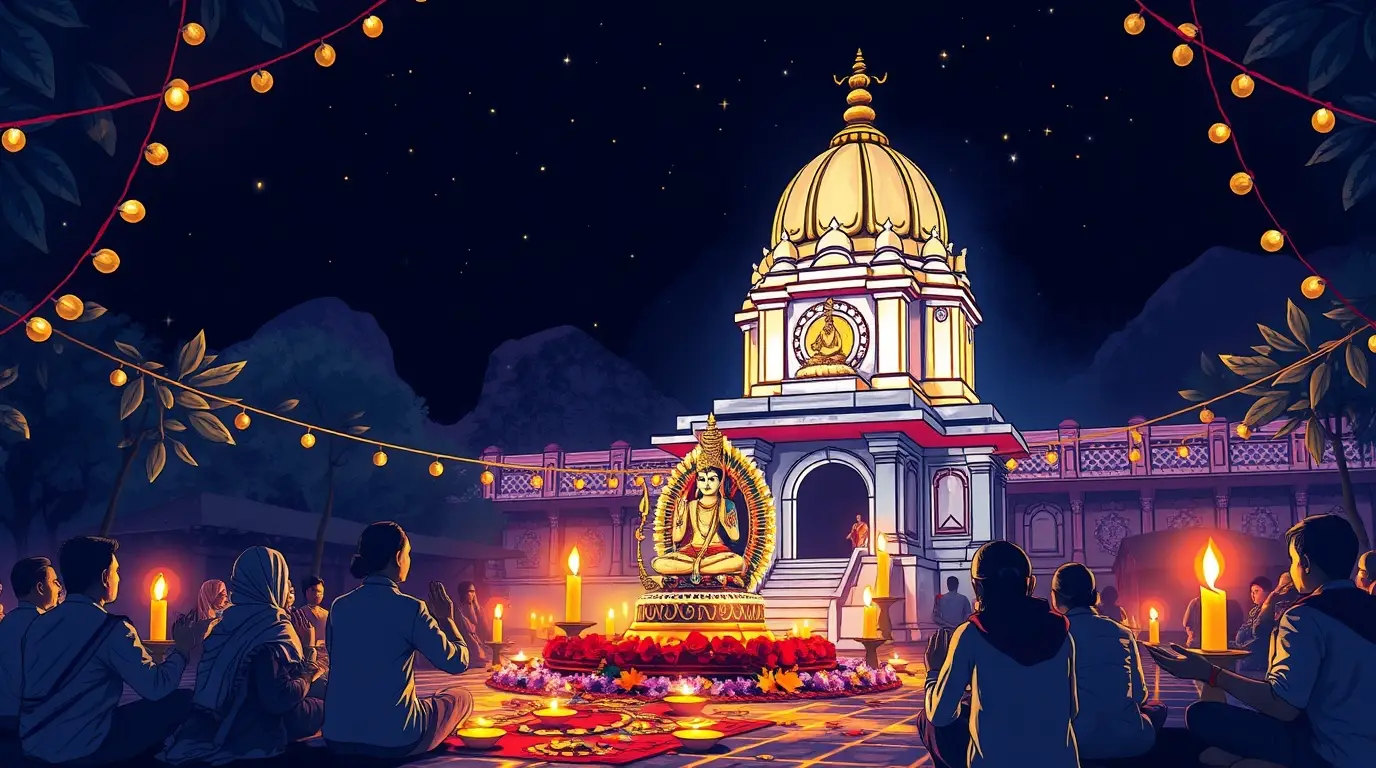Maha Shivaratri Story: Unveiling the Legends, Rituals, and Spiritual Essence of the Great Night of Shiva
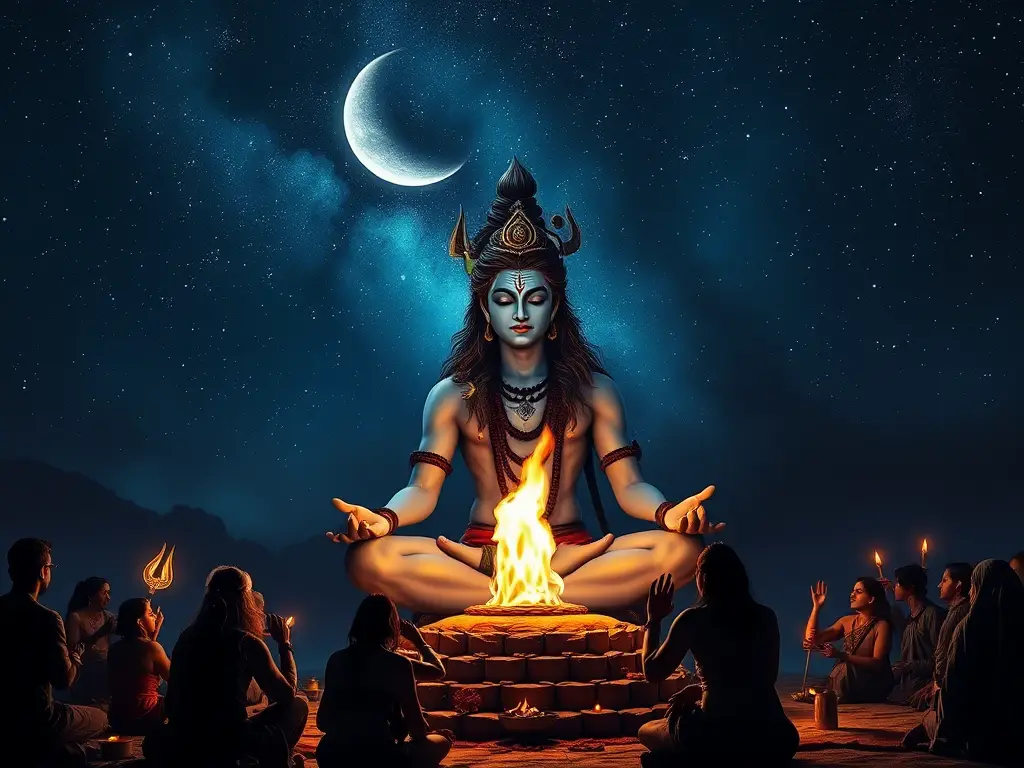
Maha Shivaratri, one of the most revered festivals in Hinduism, holds a special place in the hearts of millions of devotees worldwide. Celebrated annually on the 14th day of the dark fortnight in the month of Phalguna (February or March), this auspicious occasion is dedicated to Lord Shiva, the destroyer and transformer among the Hindu Trinity. The festival transcends mere religious observance, weaving together ancient legends, intricate rituals, and profound spiritual significance that continue to inspire generations across diverse cultures.
The importance of Maha Shivaratri extends far beyond its religious roots, touching upon universal themes of renewal, transformation, and spiritual awakening. Unlike other Hindu festivals characterized by vibrant celebrations and feasting, Maha Shivaratri is marked by solemn devotion, fasting, and night-long vigils. This unique approach to celebration reflects the deeper philosophical underpinnings of Shaivism, emphasizing introspection and self-realization over external festivities.
Throughout history, Maha Shivaratri has evolved from an ancient Vedic observance into a global phenomenon, attracting spiritual seekers from various backgrounds. The festival’s enduring appeal lies in its ability to bridge traditional mythology with contemporary spiritual practices, offering modern practitioners a tangible connection to ancient wisdom. From the snow-capped peaks of the Himalayas to bustling urban centers worldwide, devotees gather to honor Lord Shiva through meditation, chanting, and ritualistic worship, creating a powerful collective consciousness that transcends geographical boundaries.
This article delves deep into the multifaceted aspects of Maha Shivaratri, exploring its legendary origins, traditional customs, and the profound spiritual insights it offers to contemporary seekers. Through understanding these elements, we can appreciate how this ancient festival continues to illuminate paths of personal growth and spiritual evolution in our modern world.
The Mythological Tapestry of Maha Shivaratri
The story of Maha Shivaratri unfolds through multiple fascinating legends that have been passed down through generations, each contributing to the festival’s rich mythological heritage. One of the most prominent narratives revolves around the churning of the ocean (Samudra Manthan) when the gods and demons worked together to obtain the elixir of immortality. During this cosmic event, a deadly poison called Halahala emerged, threatening to destroy all creation. In an act of supreme sacrifice, Lord Shiva consumed the poison, holding it in his throat to prevent its destructive power from spreading. His consort, Parvati, pressed her hand against his throat to contain the poison, which turned his neck blue, earning him the name Neelkantha (the blue-throated one). It is believed that the night of Maha Shivaratri commemorates this divine intervention that saved the universe.
Another significant legend speaks of the celestial dance of creation and destruction performed by Lord Shiva on this auspicious night. According to ancient scriptures, Shiva performed the Tandava, a cosmic dance representing the cycle of creation, preservation, and dissolution. This divine performance was witnessed by the gods, sages, and celestial beings who remained awake throughout the night, mesmerized by the cosmic spectacle. This tradition of staying awake during Maha Shivaratri continues to this day, symbolizing vigilance and devotion.
The festival also marks the divine marriage of Shiva and Parvati, celebrating the union of masculine and feminine energies in the cosmos. This aspect of Maha Shivaratri emphasizes the importance of balance and harmony in creation. According to legend, Parvati performed intense penance to win Shiva’s affection, and their celestial union on this night represents the perfect alignment of spiritual energy and material existence.
Perhaps one of the most intriguing stories relates to King Chitrabhanu of the Ikshvaku dynasty, as recounted in ancient texts. The king, while observing a fast on Maha Shivaratri, shared his past life experiences with sage Ashtavakra. In his previous birth as a hunter named Suswara, he had unknowingly observed the fast while trapped in a tree, offering leaves and water to a Shiva Lingam below. This act of unintentional devotion secured him liberation from the cycle of rebirth, illustrating how sincere devotion can lead to spiritual enlightenment regardless of circumstances.
These interconnected stories create a rich tapestry of mythology that explains why Maha Shivaratri is observed with such reverence. Each narrative contributes to the festival’s deeper meaning, teaching devotees about sacrifice, devotion, and the cyclical nature of existence. The combination of these legends provides a comprehensive understanding of why this particular night is considered so auspicious and why it continues to hold such profound significance in Hindu cosmology and spiritual practice.
Sacred Observances: Rituals and Traditions of Maha Shivaratri
The celebration of Maha Shivaratri unfolds through a series of meticulously observed rituals and traditions that embody deep spiritual symbolism. Central to these practices is the abhishekam ceremony, where devotees perform elaborate bathing rituals for the Shiva Lingam using five sacred substances known as Panchamrita – milk, yogurt, honey, ghee, and sugar. Each ingredient carries specific symbolic meanings: milk represents purity, yogurt signifies prosperity, honey embodies sweetness of speech, ghee denotes illumination, and sugar symbolizes happiness. The continuous pouring of these substances over the lingam throughout the night creates a mesmerizing visual spectacle while reinforcing the cyclical nature of existence.
Fasting forms another crucial aspect of Maha Shivaratri observance, with devotees undertaking various levels of dietary restrictions. Some maintain a strict nirjala fast without even water, while others consume only fruits or specific foods like sabudana (tapioca pearls) and potatoes. This physical discipline serves as a means of purifying the body and focusing the mind on spiritual pursuits. The fast typically begins at sunrise on the day of the festival and concludes the following morning after the completion of puja ceremonies.
Night-long vigils, known as jagran, represent one of the most distinctive features of Maha Shivaratri celebrations. Devotees gather in temples and homes to sing bhajans (devotional songs), chant mantras, and recite sacred texts like the Rudram and Chamakam from the Yajurveda. The most common mantra, “Om Namah Shivaya,” resonates through the night, creating an atmosphere of collective spiritual energy. These gatherings often feature katha sessions where learned priests narrate stories from Shiva Purana and other sacred texts, keeping the spiritual momentum alive throughout the night.
Temple rituals reach their peak during the four prahars (quarters) of the night, each marked by separate puja ceremonies. Priests perform elaborate rituals involving sixteen steps (Shodashopachara) that include invocation, bathing, clothing, and offering of food to the deity. The midnight puja holds special significance, believed to be the time when Lord Shiva performed his cosmic dance. Devotees queue for hours to offer bilva leaves (bel patra) to the lingam, as it is considered especially auspicious to do so on this night.
In addition to temple observances, many families create temporary shrines in their homes, installing small Shiva Lingams and decorating them with flowers, mango leaves, and sacred threads. The lighting of oil lamps throughout the night symbolizes the dispelling of ignorance and darkness. Water pots are kept near the shrine, with continuous dripping of water onto the lingam, representing the eternal flow of devotion and the cyclical nature of time.
These rituals collectively create a transformative experience that transcends mere ceremonial observance. They serve as powerful tools for spiritual elevation, helping devotees connect with the divine through disciplined practice and focused devotion. The combination of physical austerity, mental concentration, and emotional surrender creates a holistic approach to spiritual growth that characterizes the essence of Maha Shivaratri celebrations.
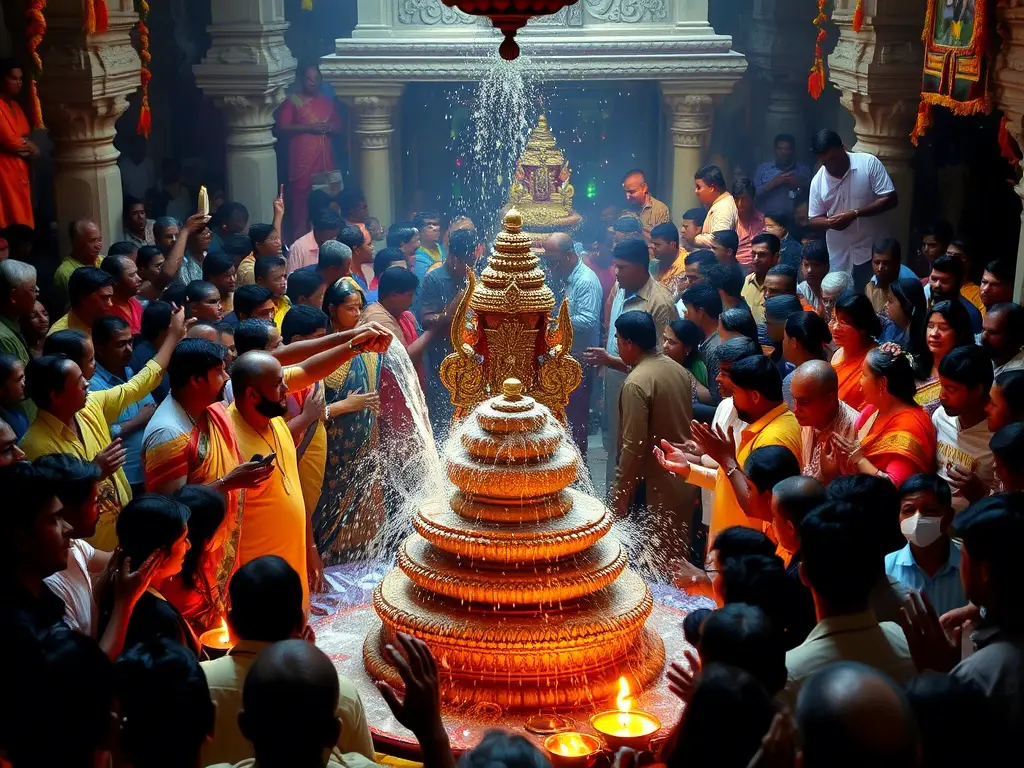
Spiritual Dimensions: The Profound Significance of Maha Shivaratri
Beyond its surface-level rituals and celebrations, Maha Shivaratri serves as a profound spiritual gateway, offering devotees access to deeper realms of consciousness and self-realization. At its core, the festival embodies the concept of overcoming darkness and ignorance through sustained spiritual practice and unwavering devotion. The night-long vigil symbolizes the human journey through the darkness of material existence toward the dawn of spiritual enlightenment, mirroring the cosmic dance of Shiva that maintains the balance between creation and destruction.
The practice of fasting during Maha Shivaratri holds deeper metaphysical implications than mere physical abstinence. By controlling basic instincts and desires, devotees learn to transcend their physical limitations and cultivate inner strength. This process of self-restraint helps purify the mind and body, creating a conducive environment for spiritual growth. The discomfort experienced during fasting serves as a reminder of the impermanence of physical pleasures and encourages seekers to focus on higher spiritual goals.
The continuous chanting of “Om Namah Shivaya” throughout the night represents more than just vocal repetition; it becomes a powerful tool for meditation and self-transformation. Each syllable of this panchakshara mantra vibrates at specific frequencies that align with different energy centers in the body, facilitating the awakening of Kundalini energy. This primordial sound current helps break through layers of conditioning and ego, allowing practitioners to experience their true divine nature.
The ritual of offering bilva leaves to the Shiva Lingam carries significant spiritual symbolism. The three leaves of the bilva plant represent the three gunas (qualities) of nature – sattva (purity), rajas (activity), and tamas (inertia). When offered with devotion, these leaves help devotees transcend these qualities and realize their essential unity with the divine consciousness. Similarly, the continuous pouring of water over the lingam during abhishekam symbolizes the constant flow of grace from the divine source, reminding practitioners of the need for persistent spiritual effort.
Maha Shivaratri also teaches the importance of embracing both constructive and destructive forces in life. Just as Shiva consumed the poison Halahala to protect creation, devotees learn to accept and transform negative experiences into opportunities for growth. This acceptance of duality – light and darkness, creation and destruction – leads to a state of equilibrium and spiritual maturity. The festival emphasizes that true enlightenment comes not from rejecting worldly experiences but from transcending them through conscious awareness and devotion.
The collective energy generated during Maha Shivaratri celebrations creates a powerful spiritual field that benefits both participants and the broader community. The synchronized chanting, meditation, and rituals performed by thousands of devotees simultaneously amplify individual efforts, creating a ripple effect of positive energy that extends beyond physical boundaries. This shared spiritual experience demonstrates the interconnectedness of all beings and reinforces the universal principles of love, compassion, and service that lie at the heart of Shiva consciousness.
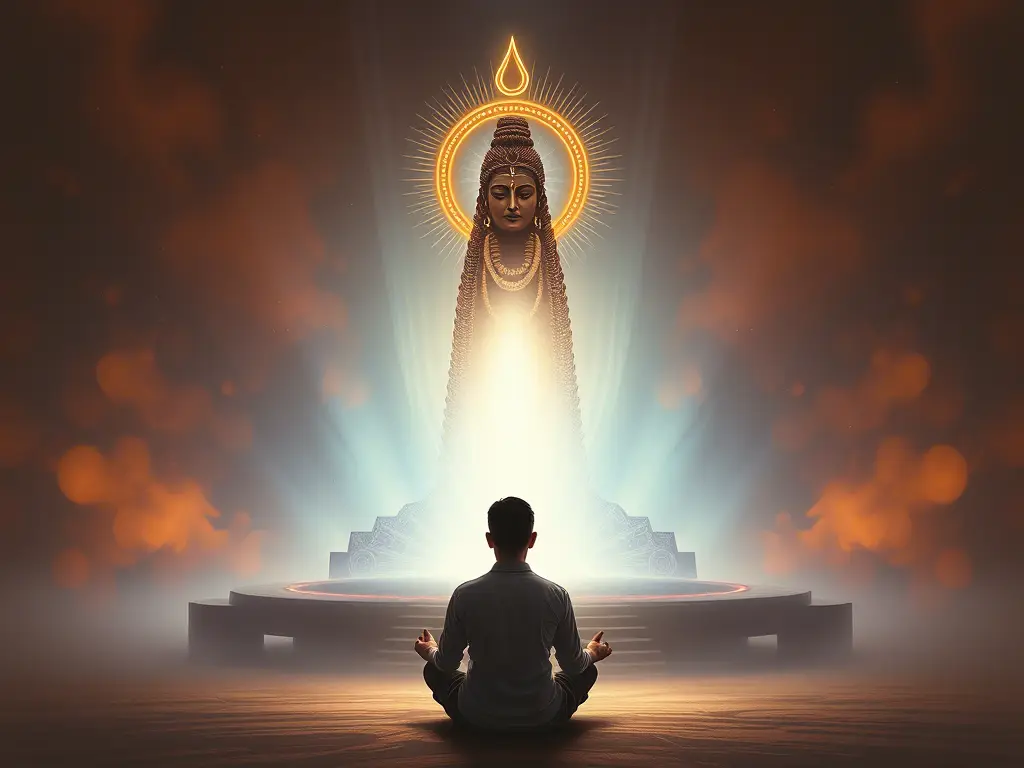
Contemporary Relevance: Maha Shivaratri in Modern Times
In today’s fast-paced world, Maha Shivaratri continues to resonate deeply with people from diverse backgrounds, offering timeless wisdom that addresses contemporary challenges. The festival’s emphasis on self-discipline, mindfulness, and spiritual awakening finds particular relevance in an era dominated by digital distractions and superficial connections. Modern practitioners have adapted traditional observances to fit contemporary lifestyles while preserving their essential spiritual essence. Urban yoga studios and wellness centers now host special Maha Shivaratri events, combining ancient meditation techniques with modern therapeutic practices to help participants manage stress and anxiety.
The environmental consciousness embedded in Maha Shivaratri rituals has gained new significance in the context of climate change and ecological concerns. The use of natural materials in worship, the emphasis on water conservation during abhishekam ceremonies, and the preference for biodegradable offerings reflect sustainable practices that align with contemporary environmental values. Many temples and spiritual organizations have initiated eco-friendly celebrations, encouraging devotees to adopt green practices while maintaining traditional observances.
Social media platforms have transformed how Maha Shivaratri is celebrated and shared globally. Virtual prayer meetings, live-streamed temple ceremonies, and online meditation sessions have made the festival accessible to international audiences, fostering cross-cultural understanding and spiritual exchange. Younger generations particularly appreciate how these digital adaptations preserve cultural heritage while embracing technological advancements. The festival’s message of inner transformation and spiritual growth has found resonance among millennials and Gen Z seeking authentic experiences beyond material success.
Modern interpretations of Maha Shivaratri emphasize its psychological and therapeutic benefits. Mental health professionals recognize the value of the festival’s structured approach to mindfulness and self-reflection. The practice of staying awake through the night, combined with chanting and meditation, serves as a powerful tool for breaking negative thought patterns and cultivating emotional resilience. Corporate wellness programs increasingly incorporate elements of Maha Shivaratri observances, such as guided meditation sessions and mindful eating practices, to enhance employee well-being and productivity.
The festival’s teachings about embracing life’s dualities find practical application in modern conflict resolution and leadership development. The concept of maintaining equilibrium between opposing forces – similar to Shiva’s role as both creator and destroyer – provides valuable insights for navigating complex social and professional challenges. Educational institutions have begun incorporating these philosophical principles into their curriculum, helping students develop balanced perspectives and adaptive thinking skills.
Community service initiatives inspired by Maha Shivaratri have emerged as a significant trend in modern celebrations. Many temples and spiritual organizations organize charitable activities, environmental clean-up drives, and social welfare programs during this period. These efforts reflect the festival’s underlying principle of seva (selfless service) and demonstrate how ancient spiritual practices can translate into meaningful social impact in contemporary society.
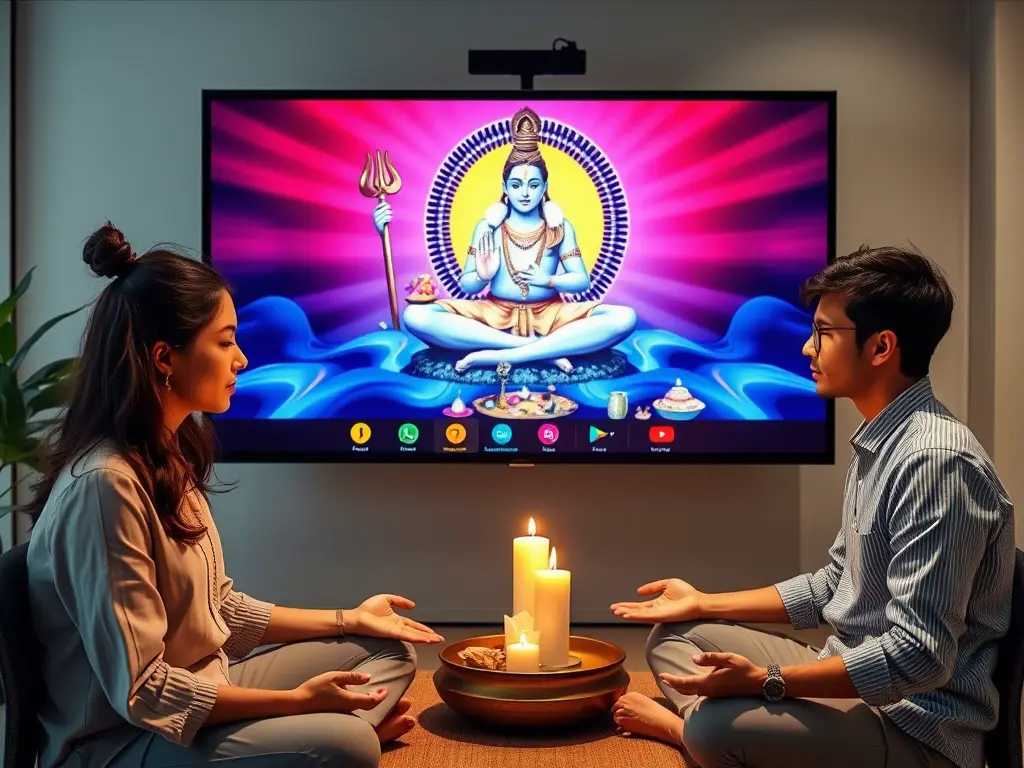
You Might Also Like:
- Inspiring Self Growth Quotes to Transform Your Mindset Today
- Top Teamwork Quotes to Inspire & Motivate Employees
- Inspirational Work Quotes For employees |To Motivate Team
Conclusion
Maha Shivaratri stands as a testament to devotion, spirituality, and cultural richness within Hindu traditions. Through its legends, rituals, and profound significance, it continues to inspire millions around the world each year. Whether through fasting or night vigils filled with prayers and chants, devotees engage deeply with their faith during this auspicious occasion—celebrating not just Lord Shiva but also their own journeys toward enlightenment and renewal.
Brighten someone’s day with these delightful Maha Shivaratri Story —they’re sure to bring a smile and a touch of warmth to anyone’s heart! Whether it’s a sweet message or a playful quip, these words are perfect for making everyday moments feel special.
Image Credits: Lordicon and Pixabay
If you enjoyed this post, why not share it with your friends and loved ones? Spread the joy and inspiration! And for more engaging stories, tips, and insights across all categories, be sure to stay connected with AskQuets.
FAQ’s
What is the significance of fasting on Maha Shivaratri?
Fasting during Maha Shivaratri purifies both body and mind. It enables devotees to concentrate on their spiritual practices without distractions from food consumption.
How do people celebrate Maha Shivaratri?
Celebrations include performing rituals at temples, staying awake all night for prayers (Jagaran), chanting mantras, fasting, and offering bilva leaves to Lord Shiva’s idol or Linga.
Why do devotees chant “Om Namah Shivaya”?
This mantra is considered highly powerful in Hinduism. Chanting it helps devotees connect with Lord Shiva’s energy while seeking blessings for peace and prosperity.
What are some popular temples associated with Maha Shivaratri?
Famous temples include Kashi Vishwanath in Varanasi, Kedarnath in Uttarakhand, Somnath in Gujarat, and Chidambaram in Tamil Nadu.
